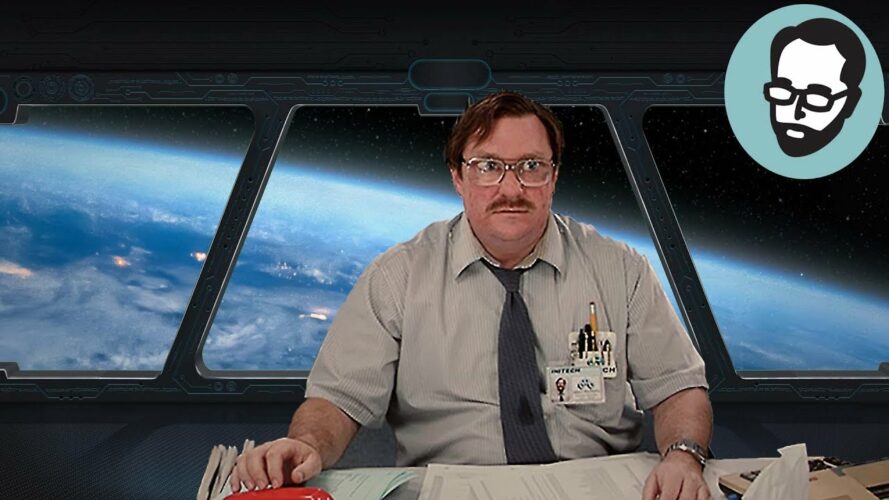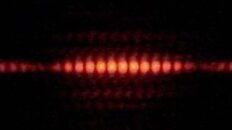Orbital Reef is a collaboration between Blue Origin, Sierra Space, Boeing and several other companies and organizations, and their plan is to build a private space station featuring zero-gravity work space for others to lease, just like an office building. Featuring modules for science research, manufacturing, and media production. But how likely is it to succeed?
TRANSCRIPT:
The company is called Orbital Reef, and if you haven’t heard of it, it involves Blue Origin, Boeing, Sierra Space, and several other companies and institutions.
Their goal is to become one of the first in a new generation of commercial space stations after the ISS shuts down around 2030.
They were awarded $130 million back in December 2021 through NASA’s Commercial Low-Earth Orbit Development program. And in August 2022, they passed a critical system definition review with NASA.
This basically affirmed that its planned architecture was sound and the project could proceed further in the design phase.
So yeah, with Artemis kicking into gear and the ISS on its way out, NASA’s basically handing Low-Earth Orbit over to the private sector while it focuses on deep space. So there’s actually several private space stations in the works, I’ll get to some of those later in this video but first let’s talk about Orbital Reef.
According to its website, Orbital Reef will orbit at about 402 kilometers (250 miles) above Earth. And the general idea is for it to be an orbital business park.
So just like today a company might rent office or warehouse space, with Orbital Reef, you could lease access to pre-formulated spaces… in space.
Modules where companies can do microgravity research, technology development, manufacturing products, as well as space tourism and, yes, media and film production.
Hence the company’s slogan: Your address in orbit.
From space flight to seeing the Earth from outer space to floating free and weightless, the company will offer flight plans, training, and activities for short or long visits.
As CEO of Sierra Space Tom Vice said,
“We are on the doorstep of the most profound industrial revolution in human history. An industrial revolution marked by the transition from the last 60 years of space exploration to a future where humanity extends our factories and cities into space. It isn’t solely about tourism – it is about unlocking the next great discoveries using the microgravity factories that we will build just 250 miles above the Earth’s surface.”
And this isn’t really hyperbole, there’s a lot of things we’ve discovered over the years that can be manufactured much better in microgravity, like biological tissue for example.
We all love the idea of being able to 3D print organs for people who need transplants, well a big hurdle to overcome is that if you start laying down cells in regular Earth gravity, they just kinda pool together and can’t take the form they need to take. This actually works much, much better in microgravity.
So someday you might be able to get a new liver 3D printed using your own stem cells in space. And that’s just one example, there are dozens of other applications.
So, another company that’s part of Orbital Reef is everybody’s favorite space punching bag, Blue Origin. And look, I’ve been spicy about Blue Origin in the past, but I’ll be nice today, I promise.
Space is hard…
But Blue Origin has a big role to play here because if you’re going to build a business park in space, you need a heavy lift vehicle to put all that payload up there, and exactly what the New Glenn is designed to do.
And it does tie in to Blue Origin’s overall mission of moving industry off Earth and into space.
The question becomes how close are we to seeing the New Glenn get off the ground? (struggle – regroup) It has been delayed. It was originally scheduled for launch in 2020, that got pushed to early 2021, then late 2022, and now… Yeah, it’s delayed.
Blue Origin is a lot more secretive than say SpaceX, so we really don’t know how far along they are – we’ve seen pathfinder prototypes, we’ve seen a drone ship to land in the ocean that has now been scrapped…
The most recent thing we’ve seen is them testing the fairings in the water at Kennedy Space Center in December 2022.
They may be testing to see if they can recover and reuse the fairings, like SpaceX does with the Falcon 9 and Falcon Heavy.
New Glenn’s payload fairings are made from a pricey carbon composite, and it is designed to be as reusable as possible so it’s not out of the question that they’d want to reuse them.
But it seems like the main holdup with New Glenn is the development of their BE-4 engines, which the first stage will have 7 of them.
The BE-4 is a massive and powerful engine that will run on methane and oxygen just like the SpaceX Raptor engine, and they’re designed to be reusable.
But they’ve run into multiple issues with the engine development, in testing it wasn’t burning as long as it should, there were issues with the turbopump, some high-level team leads left the company, it’s been a clusterf–
The hope is that the engines will be ready to get New Glenn off the ground some time this year but as of this recording, the BE-4s are still not flight-qualified.
In the meantime, Blue Origin has continued launching New Shepherd missions using their smaller BE-3 engine, except they’ve actually put a hold on those for a while because of… well… engine issues.
Space is hard.
Anyway, the other major partner in Orbital Reef is Sierra Space, who do have some exciting things happening.
Sierra Space is the company behind the Dream Chaser space plane, which I did a video on space planes a while back, linkie-poo around here somewhere but the long and short of it is it’s kind-of a miniature Space Shuttle.
And I am a fan.
Its first vehicle named Tenacity is set to start running a series of NASA missions to the International Space Station in 2023.
In August, Sierra Space announced that the Dream Chaser would be used for a 2024 cargo mission to transport several life science experiments to the space station for Yuri, a German space biotech company.
Sierra Space will send at least six cargo missions to the space station using Dream Chaser. These are all uncrewed missions but the plan is to eventually launch crew up to the ISS and of course, Orbital Reef.
It was actually in the running for the Commercial Crew contract that went to the Crew Dragon and Starliner but it did get picked for cargo missions.
The ship will lift off from the Cape Canaveral Space Force Station and it’ll be able to land on conventional runways.
One argument for the Dream Chaser that I found interesting was that if a crew member on the ISS became severely injured or ill, coming back in a vehicle that can land on a runway anywhere in the world would make it a lot easier to get them to a hospital on the ground than, say, landing in the ocean and everything that goes along with that.
But yeah, the hope is to see Tenacity make its first flights this year, but it’s being delayed because they’re going to launch on the new Vulcan Centaur rocket from ULA, and that’s been delayed, also because of engine issues.
Yeah, they’re using a new engine that’s still in development, it’s called the… BE-4 engine. It’s Blue Origin that’s holding it up. Excuse me…
Okay, to be fair, Blue Origin did just deliver the first 2 BE-4 engines to ULA a few months back in October so maybe we’ll see something happen in 2023. (a beat) Is it mean to point out that the original deadline was 2017? And I guess COVID didn’t help.
Space is hard, space is hard, space is hard…
- Arizona State University is leading the University Advisory Group, a global consortium of universities for research advisory services and public outreach.
- Boeing is leading the development of Orbital Reef’s operations and maintenance and science module, and Starliner crew capsule.
- Genesis Engineering Solutions is developing the Single Person Spacecraft for routine operations and tourist excursions.
- Redwire Space is leading microgravity research payload development and operations, large deployable structures, and the Orbital Reef digital twin.
The long and short of it is Orbital Reef is working on an “if you build it, they will come” model. They’re building the facilities and leasing them out to anybody who can use it, basically giving people a microgravity platform for whatever use case they may have.
Other companies are taking different approaches.
Remember that $130 million grant that NASA awarded Orbital Reef? Well, NASA also awarded two other companies developing space stations.
They awarded $160 million to Houston-based Nanoracks for its Starlab project.
Nanoracks previously worked with NASA to build the Bishop Airlock which is currently on the ISS, but Starlab would be an all-in-one, continuously crewed, commercial space station for research and commercial industrial work.
Nanoracks plans to launch Starlab in 2027 on a single flight, in collaboration with Voyager Space and Lockheed Martin.
This station is designed for four astronauts. It’ll have power, volume, and payload capability equal to the ISS.
- A biology lab
- A plant habitation lab
- A physical science and materials research lab
- An open workbench area for researchers and commercial customers
The hotel company Hilton is also collaborating on Starlab by helping make crew suites less utilitarian and more like extended stay accommodations.
This isn’t the first time Hilton has worked with Nanoracks. In 2020, DoubleTree hotel brand cookies were baked in special ovens on the ISS, marking what Hilton said were the first cookies baked in space.
Another group that received a NASA grant was Northrop Grumman, who received $125.6 million for a project described as a design that
“… leverages flight-proven elements, such as the Cygnus spacecraft that provides cargo delivery to the International Space Station, to provide a base module for extended capabilities including science, tourism, industrial experimentation, and the building of infrastructure beyond initial design.”
There will be multiple docking ports allowing for future expansion to support crew habitats, labs, airlocks, and artificial gravity facilities to support various customers.
Northrop’s space station will support four permanent crew members at the beginning, expanding to an eight-person crew over time, with an operating lifetime of about 15 years.
And then of course there’s Axiom space, they’re working on a private space station that will build on top of the ISS and then detach itself and become its own thing.
But before they get to that point, they’re the ones who are going to build the set for that Tom Cruise movie I was talking about at the beginning.
They’re doing it in partnership with a British company called Space Entertainment Enterprise (SEE) said in January 2022 that it’s building an inflatable module called the SEE-1 specifically for film and video production.
It’ll be six meters across when fully expanded and have facilities for film, music, and sporting events.
Which sounds to me like someone’s gonna have to come up with a zero gravity sport. Pickleball eat your heart out.
As president and chief executive of Axiom Space Michael Suffredini said,
“Adding a dedicated entertainment venue to Axiom Station’s commercial capabilities in the form of SEE-1 will expand the station’s utility as a platform for a global user base and highlight the range of opportunities the new space economy offers.”
Which is a very corporate way of saying they want to shoot the first Hollywood movie in space.
Not to be outdone, Orbital Reef announced this last September at the International Astronautical Congress that they have signed a deal with Centerboro Productions to portray the space station in a film titled HELIOS.
The film will be set in 2030 and tells the story of the spaceship HELIOS and its crew on an urgent mission to the ISS.
A solar flare hits the station, and its up to an astronomer and Air Force general to team up and save humanity.
Orbital Reef will be featured as a critical resource by the HELIOS crew.
Principle photography for the film is planned to begin in 2023. Assuming it doesn’t get delayed by Blue Origin somehow.
I tried.
One final thought, for me personally, the real value is spaceflight is is serves as a cauldron for innovation that filters down to the rest of us here on the ground. Because in case I didn’t mention it… Space is hard.
So much of what we take for granted in our daily lives are only possible because of some innovation that was developed in space.
So I’m hopeful in the coming decade with multiple stations providing research and manufacturing to dozens of companies, we could see a flood of spinoff technologies on a level that we’ve never seen before.




Add comment